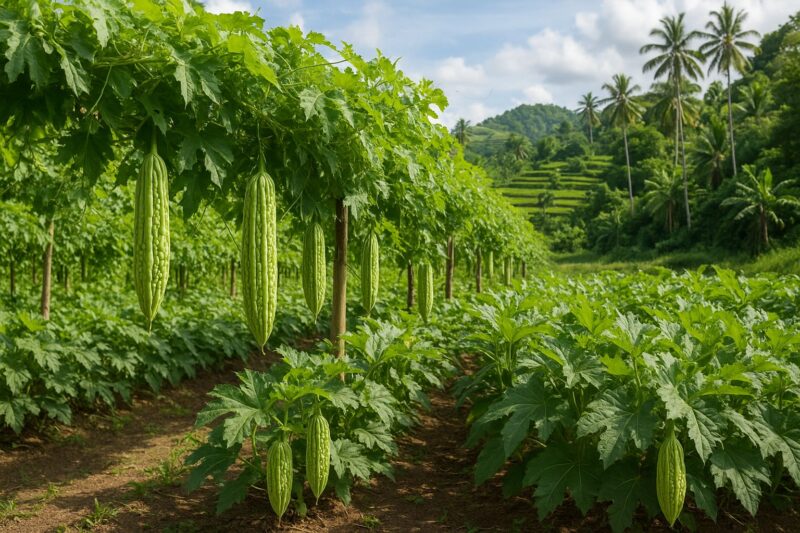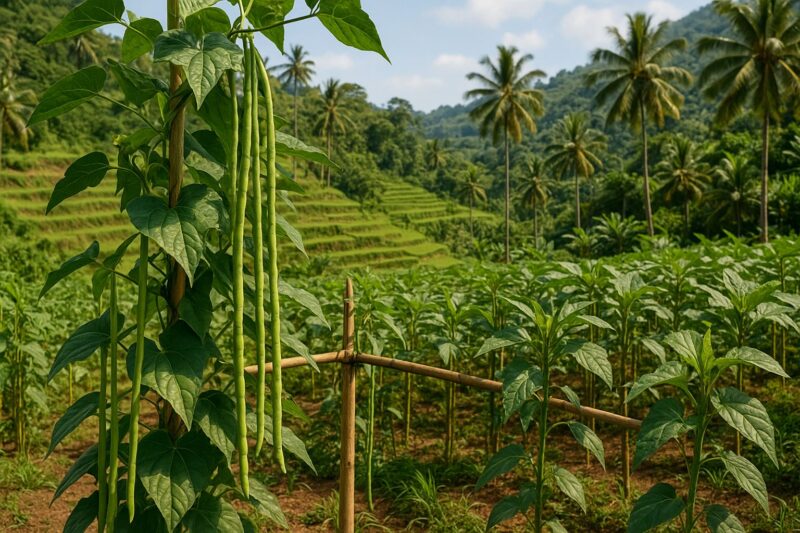Cabbage—repolyo—is more than just a crunchy salad green; it’s a versatile staple in countless Filipino dishes, from creamy coleslaw in Pampanga’s food stalls to the hearty repolyo soup served during fiestas in Batangas. Yet, under our tropical skies, growing cabbage can feel counterintuitive. How do you coax a cool‑weather crop into producing tight, juicy heads when daytime temperatures often soar above twenty‑five degrees? Over several seasons in Bulacan—where I’ve learned to tweak planting dates and soil blends—and with insights from highland growers in Benguet and Cordillera, I’ve found a rhythm that yields firm, flavorful cabbage almost year‑round. Here’s what I’ve picked up along the way.
Selecting the right variety is crucial. In our lowland provinces—Bulacan, Cavite, and Laguna—heat‑tolerant hybrids labeled “tropical cabbage” or “summer repolyo” produce heads in just eighty to ninety days, shrugging off brief spikes above thirty degrees. In upland areas—Baguio, Benguet, and Sagada—longer‑maturing heritage varieties develop denser heads with crisper leaves, though they can bolt if nights stay too warm. I plant hybrids here in Bulacan during late November so they mature before the heat of March, and I reserve local upland types for small demonstration plots where I can shade them under mesh cloth when necessary.
Soil preparation sets the stage. Cabbage thrives in deep, rich loam that retains moisture yet drains freely. In clay‑rich beds, I incorporate two wheelbarrows of homemade compost and a handful of rice hull ash per ten square meters to improve aeration and loosen texture. In sandy coastal fields—common around Iloilo and Palawan—mixing in coconut coir or well‑rotted goat manure helps hold water without turning the bed into a bog. A quick pH check with a local kit ensures values sit between six and seven; if acidity creeps too low, a light dusting of agricultural lime brings it back into range.
Timing is everything. Across most lowlands, early December plantings strike the sweet spot: seedlings hardened off in November transplant into cooling soils, then heads mature by February, before the summer heat sets in. A friend in Pampanga plants in January and still gets good heads by April, though the margins for bolt increase. In cooler highlands, transplanting can stretch into March, but bolting becomes a concern after May, so most upland growers wrap vulnerable plots in shade cloth or interplant with taller crops like corn to diffuse sun.
Seedlings start indoors about four weeks before transplant. Sow seeds in trays under shade cloth, maintain even moisture, and thin to the strongest seedlings once they develop true leaves. When seedlings reach pencil thickness—around five weeks in—I harden them off over a week: two hours of sunlight on day one, increasing exposure each day until they handle full sun. I once plunged seedlings straight into the field too quickly, and half of them wilted overnight—an expensive lesson in patience.
Transplant at ten‑centimeter spacing, with rows thirty to forty centimeters apart. Firm soil around each plant, water in deeply, and mulch with rice straw to conserve moisture and suppress weeds. In Bulacan’s February dry spell, that mulch prevented my soil from crusting and saved me from daily weeding drudgery.
Feeding your cabbage is part art, part precision. At planting, I add a teaspoon of bone meal per hole for phosphorus, then a light side‑dressing of decomposed chicken manure when heads begin forming—roughly six weeks in. Beware too much nitrogen; I once overdid it and ended up with lush leaves that refused to form tight heads. Balance with a sprinkle of wood ash for potassium around the drip line once heads reach tennis‑ball size.
Pests and diseases demand vigilance. Cabbage worms—those green caterpillars—can strip leaves overnight. I scout beds twice a week, shaking leaves over a white tray and handpicking offenders. A mild neem oil spray every ten days keeps populations low without harming pollinators. Aphids cluster near the crown; a strong water jet flushes them off, and I prune heavily infested leaves. Black rot and downy mildew appear as yellow‑black spots—remove affected plants immediately and improve row spacing to boost airflow.
Harvest comes when heads feel firm under gentle pressure—usually ninety days for hybrids, a bit longer for upland varieties. Cut heads at the base with a sharp knife, leaving lower leaves intact to feed the soil. Heads store best after a two‑day “cure” under shade, where outer leaves dry slightly, protecting the crisp core. In my Bulacan storage shed—cool, ventilated, with a few banana stalks to buffer humidity—heads keep for up to three weeks.
One April, after a surprise late cold front, my January cabbages hardened into rock‑solid heads overnight. I worried they’d crack when the sun returned, but a week later, the brassicas simply resumed growing, adding another two crowns each. It reminded me that repolyo, despite its reputation, can be remarkably forgiving when you time and tend it well.
Growing cabbage across the Philippines involves a dance with seasons: choosing the right variety, feeding the soil, pacing your plantings, and scouting for pests. But when you pull a firm, pale‑green head from the ground—complete with the faint crunch that signals freshness—you realize that patience pays off. Whether you’re a smallholder in Mindanao or a backyard gardener in Bulacan, this gentle giant of the vegetable world rewards those who learn its rhythms.
I’m open for consulting and speaking opportunities on sustainable vegetable production and agribusiness nationwide. Let’s cultivate success together.
#Repolyo #CabbageFarming #PhilippineAgriculture #SustainableFarming #HomeGarden #ConsultingAvailable #SpeakingOpportunities




